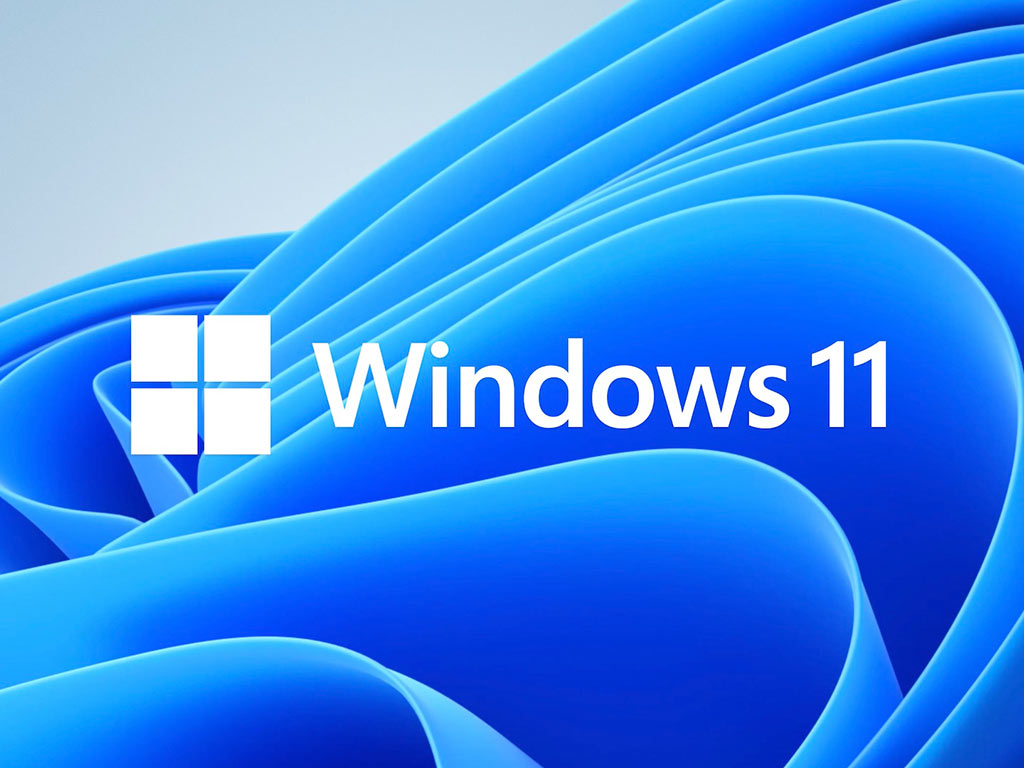
- Contact Sales:
- (310) 826-6800

According to data made public today by IT asset management platform vendor Lansweeper, the number of Windows upgrades has almost tripled over the past three months, although the overall adoption rate for the Windows update is still fairly low.
Only 1.44% of PCs currently run on Windows 11, up from 0.52% in January, according to Lansweeper’s PC management software survey of more than 10 million Microsoft machines.

The adoption rate of 19.4% reported by computer monitoring software company AdDuplex in its most recent findings contrasts sharply with Lansweeper’s findings. However, according to AdDuplex’s data, the rise of Windows has slowed down in recent months; it only had a 0.1% increase in market share in comparison to other Windows editions, and users appeared more interested in adding more apps and Microsoft products, such as Microsoft Edge.
The gap in adoption rates, according to Alan Mendelevich, CEO of AdDuplex, is most likely due to the fact that Lansweeper’s data is taken from internal company user PCs whereas AdDuplex’s data is primarily derived from consumer systems.
According to Jack Gold, chief analyst of J. Gold Associates, AdDuplex’s estimates of Windows adoption are exaggerated, and Lansweeper’s assertion that 55% of workstations are incompatible with the new Windows 11 is likely overestimated.
Gold continued, “I honestly doubt that the new Windows 11 is running on 19% of all currently active computers,” given that Windows 10 is only installed on approximately 75% of all currently active computers, depending on whose data you believe. In light of this, over 25% of Windows 10 pcs might get a Windows 11 update at a 19% adoption rate. I find it difficult to believe that 25% of all Windows 10 devices are even compatible with Windows 11 given that many of the currently in use PCs are three to five years old or even older (certainly at least 40%).
When comparing the data from AdDuplex and Lansweeper, it’s important to understand how each company produced its data, whether it was through a web browser interacting with a specific website (a self-selected subgroup of users) or through a willing user running the company’s software (again, a self-selected subgroup), says Gold.
It is likely that any device that is more than a few years old won’t be able to be upgraded to the new Windows 11 because it isn’t compatible with it. According to Gold, older, less powerful PCs are far less likely to be compliant.
This result, again, was in stark contrast to statistics made public by Lansweeper, which at the time stated that the new platform had a less than 1% adoption rate. AdDuplex data from December revealed that the upgrade of Windows 11 devices had reached roughly 9%.

It was stated by various managed services providers that “overall adoption remains slow” and that 55% of scanned computers cannot even be upgraded to the new Windows nearly six months after it was first made generally accessible. Businesses in particular must use cutting-edge technology to provide impeccable desk services and safeguard their data in the cloud so this is a big concern for them.
In the Los Angeles area, ZZ Computer, a reputable IT managed service provider, is available to assist you as a business owner in taking the proactive approach in protecting your business. The managed services we offer include everything from IT support, remote monitoring, support services, desk services and cloud computing for established and new companies. A service level agreement can help you ensure disaster recovery in case of data breaches and put your business needs first, so your in-house teams don’t have to get overloaded.
The RAM test was passed by the majority of Microsoft devices Lansweeper’s software analyzed (91%), but only around half of the workstation TPMs tested met the requirements (19% failed and 28% were either not TPM compatible or had it disabled). Additionally, more than half of the devices were not enrolled in security programs, which prevented them from contacting Microsoft for technical support in the event of a problem.
According to Lansweeper, the forecast is much less upbeat for any virtual machine computer or PC game. “Despite the much higher 44.9% CPU compatibility, their analysis shows that just 66.4% of systems have enough RAM. Only 0.23 percent of virtual workstations have TPM 2.0 enabled, which is poor news for TPM.

It was stated by various managed services providers that “overall adoption remains slow” and that 55% of scanned computers cannot even be upgraded to the new Windows nearly six months after it was first made generally accessible. Businesses in particular must use cutting-edge technology to provide impeccable desk services and safeguard their data in the cloud so this is a big concern for them.
The vast majority of users have decided to continue with Windows 10 despite Microsoft and managed service providers pushing them to update to Windows 11.
According to Roel Decneut, chief strategy officer at Lansweeper, unlike past Windows releases, the new Windows is simply a modified version of Windows 10, and there aren’t many fundamental differences between the two. Decneut continued by saying that because of this, businesses are probably reluctant to update to a new, largely untested version instead choosing to keep with Windows 10.
Steve Kleynhans, vice president of research at Gartner, agreed that business clients aren’t really adopting the new OS. Furthermore, they won’t be expected until 2023.
Kleynhans claimed that it is “a little” early to draw any conclusions about Windows’ performance. He asserted in a recent interview that even though the OS upgrade is technically six months old, many PCs weren’t receiving it until just a few months ago. The current [install rate] is most likely just normal market growth during the early stages of any new OS version and is not a sign of anything genuinely alarming.
According to Lansweeper’s updated survey data, the percentage of PCs running “end of life” OSes (i.e., systems that Microsoft no longer supports) has dropped from 9.75% in January to 6.6%. Despite Microsoft terminating support for Windows XP and Windows 7 in 2014 and 2020, respectively, a large portion of those systems continue to run those operating systems.
“Despite a progressively increasing acceptance rate, Windows 11 upgrades aren’t progressing as swiftly as Microsoft had hoped, particularly in the commercial sector. Although some companies are happy with Windows 10, which will continue to receive security upgrades through 2025, many have been discouraged from buying new machines that meet these [hardware] standards, Decneut stated.
Decneut explained that given the little differences between Windows 10 and 11, the latter’s limited adoption is likely to endure unless businesses discover a compelling cause to switch.
Customers who want to adopt Windows 11 should first check with an experienced Los Angeles managed service provider, like ZZ Computer to see if they can upgrade their present machines, he advised. IT asset management is essential for organizations because it enables IT teams to conduct extensive device audits that can tell them of the hardware specifications of machines so they can determine how many devices are capable of being updated and the potential cost of such a move.
We firmly believe that the internet should be available and accessible to anyone, and are committed to providing a website that is accessible to the widest possible audience, regardless of circumstance and ability.
To fulfill this, we aim to adhere as strictly as possible to the World Wide Web Consortium’s (W3C) Web Content Accessibility Guidelines 2.1 (WCAG 2.1) at the AA level. These guidelines explain how to make web content accessible to people with a wide array of disabilities. Complying with those guidelines helps us ensure that the website is accessible to all people: blind people, people with motor impairments, visual impairment, cognitive disabilities, and more.
This website utilizes various technologies that are meant to make it as accessible as possible at all times. We utilize an accessibility interface that allows persons with specific disabilities to adjust the website’s UI (user interface) and design it to their personal needs.
Additionally, the website utilizes an AI-based application that runs in the background and optimizes its accessibility level constantly. This application remediates the website’s HTML, adapts Its functionality and behavior for screen-readers used by the blind users, and for keyboard functions used by individuals with motor impairments.
If you’ve found a malfunction or have ideas for improvement, we’ll be happy to hear from you. You can reach out to the website’s operators by using the following email
Our website implements the ARIA attributes (Accessible Rich Internet Applications) technique, alongside various different behavioral changes, to ensure blind users visiting with screen-readers are able to read, comprehend, and enjoy the website’s functions. As soon as a user with a screen-reader enters your site, they immediately receive a prompt to enter the Screen-Reader Profile so they can browse and operate your site effectively. Here’s how our website covers some of the most important screen-reader requirements, alongside console screenshots of code examples:
Screen-reader optimization: we run a background process that learns the website’s components from top to bottom, to ensure ongoing compliance even when updating the website. In this process, we provide screen-readers with meaningful data using the ARIA set of attributes. For example, we provide accurate form labels; descriptions for actionable icons (social media icons, search icons, cart icons, etc.); validation guidance for form inputs; element roles such as buttons, menus, modal dialogues (popups), and others. Additionally, the background process scans all of the website’s images and provides an accurate and meaningful image-object-recognition-based description as an ALT (alternate text) tag for images that are not described. It will also extract texts that are embedded within the image, using an OCR (optical character recognition) technology. To turn on screen-reader adjustments at any time, users need only to press the Alt+1 keyboard combination. Screen-reader users also get automatic announcements to turn the Screen-reader mode on as soon as they enter the website.
These adjustments are compatible with all popular screen readers, including JAWS and NVDA.
Keyboard navigation optimization: The background process also adjusts the website’s HTML, and adds various behaviors using JavaScript code to make the website operable by the keyboard. This includes the ability to navigate the website using the Tab and Shift+Tab keys, operate dropdowns with the arrow keys, close them with Esc, trigger buttons and links using the Enter key, navigate between radio and checkbox elements using the arrow keys, and fill them in with the Spacebar or Enter key.Additionally, keyboard users will find quick-navigation and content-skip menus, available at any time by clicking Alt+1, or as the first elements of the site while navigating with the keyboard. The background process also handles triggered popups by moving the keyboard focus towards them as soon as they appear, and not allow the focus drift outside of it.
Users can also use shortcuts such as “M” (menus), “H” (headings), “F” (forms), “B” (buttons), and “G” (graphics) to jump to specific elements.
We aim to support the widest array of browsers and assistive technologies as possible, so our users can choose the best fitting tools for them, with as few limitations as possible. Therefore, we have worked very hard to be able to support all major systems that comprise over 95% of the user market share including Google Chrome, Mozilla Firefox, Apple Safari, Opera and Microsoft Edge, JAWS and NVDA (screen readers), both for Windows and for MAC users.
Despite our very best efforts to allow anybody to adjust the website to their needs, there may still be pages or sections that are not fully accessible, are in the process of becoming accessible, or are lacking an adequate technological solution to make them accessible. Still, we are continually improving our accessibility, adding, updating and improving its options and features, and developing and adopting new technologies. All this is meant to reach the optimal level of accessibility, following technological advancements. For any assistance, please reach out to